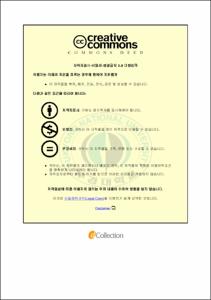ERP와 연계한 PLM시스템 구축방법 및 사례 연구
- Alternative Title
- A Case Study on the Construction of a PLM System combined with ERP
- Abstract
- 본 연구에서는 PLM시스템 도입을 통하여 한 단계 더 도약을 목표로 하는 E社의 성공적인 PLM시스템 구축을 위한 전략 및 방법을 세부적인 단계로 구분하여 고안하였다. 또한 실제 구축 사례를 통하여 그 적합성을 검증하고 차이점을 분석하였다.
E社를 위한 전반적인 PLM 구축 전략 및 방법에 대한 요구사항은 다음과 같다. 첫째, 추진목표, 전략, 조직의 구성을 통한 전사적 관점에서의 프로젝트 추진이 필요하다. 또한 경영층의 적극적인 참여로 과제에 대한 신속하고 정확한 의사결정이 필요하다. 둘째, 현상분석을 정확히 실시하여 개선방안을 도출하여야 한다. 개선방안은 목표 달성을 위한 방향성을 가지고 있어야 한다. 셋째, PLM시스템 활용의 극대화를 위하여 자사에 맞는 프로세스 및 모든 정보들의 표준화가 필요하며 발생되는 모든 Data들은 회사 각 부문의 조직인원들에게 쉽게 공유되도록 설계가 되어야 한다. 넷째, 시스템간의 연계는 업무의 정확도를 확보하고 효율성을 극대화 할 수 있는 구도로 설계되어야 한다.
본 연구는 제조업체 E社에서 요구되는 PLM 핵심기능을 위주로 다루었다. E社의 경우 PLM 구축을 통하여 설계 기간 단축, 원가 절감, 품질 확보를 통하여 경쟁사 보다 우위를 선점할 수 있을 것으로 사료된다. 향후 확장형 PLM의 연구가 필요하며 E社의 경영정보시스템과 연계하여 PLM 구축 효과를 지속적으로 Monitoring할 수 있는 시스템이 구현되어야 할 것이다.
Recently, a PLM(Product Lifecycle Management) system is accepted as an agreed outstanding solution for survival of a company in the global competitive environment. It is essential for attaining a superior position in the market to take a strategic approach differentiated from other companies. This strategy basically catches and manages various assets of knowledge which may be inside and outside the company, and then maximizes the practical use of these assets.
In this paper, a method of the construction of a PLM system is proposed. At first, the theoretical background of PLM system is roughly reviewed including definition, development process, role, function, its benefits. And next, case analyses are performed for Company E(a speaker manufacturing company). Examining the construction method of PLM, various problems are identified and analysed in implementing main modules of drawing management, part information management, bill of materials(BOM) constitution management, engineering change management, project management, and so on. Finally, a construction method of PLM system combined with ERP is suggested for each of the four basic stages of implementation; the management stage, the application stage, the solution stage, and the general stage.
A practical example of application of this approach to a similar manufacturing company is also provided. The results are compared with the case of Company E.
- Issued Date
- 2009
- Awarded Date
- 2009. 2
- Type
- Dissertation
- Publisher
- 부경대학교 산업대학원
- Alternative Author(s)
- Min, Sang-Ju
- Affiliation
- 부경대학교 산업대학원
- Department
- 산업대학원 시스템경영공학과
- Advisor
- 권혁무
- Table Of Contents
- 제 1장 서론 = 1
1.1 연구 배경 및 목적 = 1
1.2 연구 방법 및 내용 = 2
제 2장 이론적 배경 = 3
2.1 PLM 정의 = 3
2.2 PLM 발전 과정 = 5
2.3 PLM 역할 = 6
2.4 PLM 기능 = 7
2.5 PLM 도입 현황 = 9
2.6 PLM 도입 이점 = 10
제 3장 PLM 구축 방법론 = 12
3.1 PLM 경영 구축 = 13
3.2 PLM 적용 구축 = 14
3.3 PLM 해법 구축 = 15
3.4 PLM 종합 구축 = 16
제 4장 PLM 구축 방안 = 17
4.1 도입 필요성 = 17
4.2 구축 개요 = 18
4.3 준비 단계 = 21
4.4 CAD Data 관리 = 23
4.5 도면/문서 관리 = 24
4.6 부품정보 관리 = 27
4.7 사양구성 관리 = 29
4.8 설계변경 관리 = 30
4.9 프로젝트 관리 = 32
4.10 협업 관리 = 35
4.11 예상 기대효과 = 37
4.12 구축 제언 = 39
제 5장 PLM과 ERP시스템 통합 방안 = 40
5.1 통합 필요성 = 40
5.2 관리 방식 = 41
5.3 연계 방식 = 43
5.4 통합 효과 = 46
5.5 통합화 제언 = 48
제 6장 사례 연구 = 49
6.1 쿠쿠전자 구축사례 = 49
6.2 만도 구축 사례 = 55
6.3 타사 사례와의 차이점 = 58
제 7장 결론 및 향후과제 = 59
참고문헌 = 60
Abstract = 61
- Degree
- Master
- Files in This Item:
-
-
Download
 ERP와 연계한 PLM시스템 구축방법 및 사례 연구.pdf
기타 데이터 / 6.01 MB / Adobe PDF
ERP와 연계한 PLM시스템 구축방법 및 사례 연구.pdf
기타 데이터 / 6.01 MB / Adobe PDF
-
Items in Repository are protected by copyright, with all rights reserved, unless otherwise indicated.